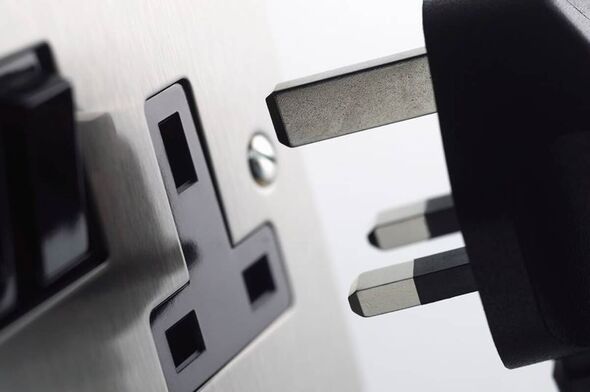
Energy bills are soaring and with more gas and electricity price rises on the way in future, many up and down the UK are looking to do whatever they can to cut their bills
The usual tricks of turning down the heating by a couple of degrees, switching to energy saving bulbs and turning lights off when not in use are all well known of course. But many households simply don’t realise how much all your gadgets are using in standby mode.
Leaving appliances on standby could be way more costly than you realise, as new data now shows.
Research from electricity and gas supplier Utilita has revealed that the average UK household has 10 items left plugged in at any one time despite them not even being in use.
The worst offenders are unsurprisingly games consoles and TVs, adding a significant chunk to your energy bills by the end of the year.
Not only do these hurt your wallet, but leaving appliances on standby, chewing through electricity, is also bad for the Earth – costing you the earth and harming the Earth, all at once.
According to a study, Global Implications of Standby Power Use, devices being left on standby account for a staggering 2 percent of global energy use.
That may not sound like much, but two percent of all the energy in the world is being wasted on devices not even being used.
The authors, Benoit Lebot of the International Energy Agency and Alan Meir of Lawrence Berkeley International Laboratory, wrote: “Standby power is responsible for 2% of OECD countries total electricity consumption and the related power generation generations almost 1% of their carbon emissions.
“Replacement of existing appliances with those appliances having the lowest standby would reduce total standby power consumption by over 70%.”
The most costly appliances to leave on standby
Xbox and PlayStation (Xbox One, Xbox Series X and PS4 and PS5)
While always fun to play, a games console becomes significantly less enjoyable when you realise just how much they could add to your energy by the end of the year.
According to Utilita, a PS4 costs 2.41p per hour played, and an Xbox One costs 2.22p – this is because they use 130 and 120 watts respectively when in use.
When left on standby, the consoles still use 10 watts, meaning even when not in use they’re costing 0.18p per hour. While seemingly insignificant, it works out at 4.45p a day, equating to £16.24 a year.
The Xbox One quick start standby costs more energy than the full shutdown. Meanwhile, a PS4 fully shut down costs basically nothing as it’s totally off.
The Xbox Series X and PS5 released more recently and these consoles are a little bit more power hungry again due to being more powerful machines. The PS5 takes about 200w to run on average, but it can drop as low as 100-150 depending on the game.
So the PS5 will cost more to run than a PS4, but not massively so. Again, the best thing to do is not to leave it on standby, but to shut down entirely when you’re not using it.
PCs could cost much much more than this if you have the latest top-of-the-range gaming rig.
TV standby costs
It’s very easy these days for our TVs to switch to standby mode without us being able to do much about it. Back in the day, your buttons were on the TV and off meant off but today most TVs cannot even be switched off without being unplugged or switched off at the wall.
This means that unless your TV is unplugged or switched off completely at the wall, it’s probably costing you a pretty penny throughout the year.
Utilita states a TV uses 40 watts of energy while in use, but much like the consoles, it uses 10 watts when sitting on standby.
That means, for five hours of watching it’s costing around 3.7p, but even if it’s left untouched all day but in standby, you’re still paying 4.45p a day.
Over the year this amounts to £16.24.
The size of your TV makes a difference too – a 65″ TV is 50% larger than a 55″ TV, which means it will cost significantly more to run.
When you buy a TV it should state the energy use – for example 180kwh – which means it would use in this exampel 180kw per hour. That means it would use 1 unit of power (1,000kw) in 5 hours. One unit is about to go up to 28p in the price cap so it’s about £1.40 for five hours of TV watching.
Printers
Our printers have a sneaky habit of sitting out of sight and out of mind, unless you need it at a specific moment.
While tucked away and out of use, it might be worth unplugging it, as this is third on the list for standby costs.
Like a TV, a printer uses around 40 watts of energy in use, and when still left on standby it continues to eat up 4 ways.
By the end of the day, this totals 1.78p, equating to £6.50 a year unnecessary added to your bills.
Baby monitor
It’s universally known that babies are expensive to raise, so make sure you’re not making life any more difficult for yourself.
Of course, it’s needed when your baby is sleeping, but when your baby is with you and awake, it may be worth switching off your baby monitor completely.
On average, a baby monitor uses around 15 watts of energy when in use, and 3 watts when on standby. Over a year, that’s an extra £4.87 on your energy bill.
Laptop
With so many of us moving to home/hybrid working, our laptops have become a critical part of our everyday lives.
Utilita says running a laptop for five hours will cost around 6.95p as the device uses about 75 watts of energy.
Make sure your laptop is unplugged when fully charged and switch it off when you’re finished, rather than just closing the lid.
While the device will only use around 3 watts of energy in standby mode, leaving on idle mode can cost an extra 1.33p a day, adding up to £4.87 over 12 months.
Smart speaker
Smart speakers are undeniably handy when in the home, you can check the time, set alarms, check the weather, and stream music.
While in use a smart speaker will only need about 3 watts of energy, but on standby that barely changes, dropping to 2 watts.
This means over the year it can add an extra £3.45 to your bill – and that’s just per speaker!



















